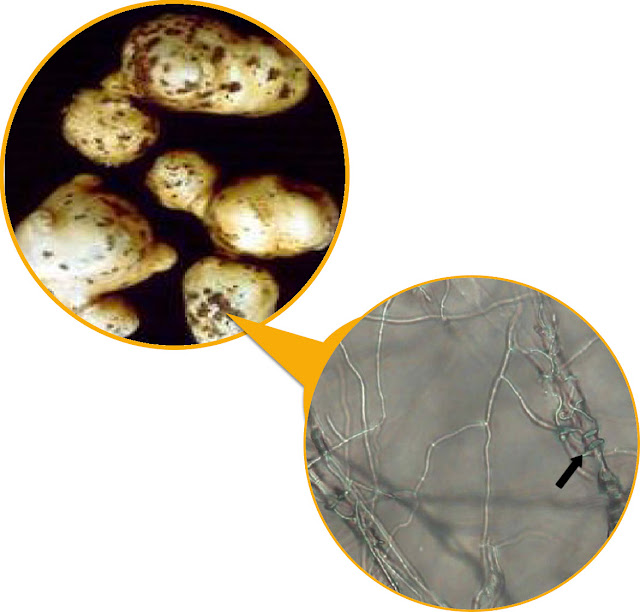Host Plants Rhizoctonia solani Kuhn's Rhizome Rot
Potatoes, chilli, cabbage, luffa, tomatoes, long beans, kale, spinach, winged beans, radishes, eggplant, kenikir, parai, strawberries, watermelon, oranges, star fruit, mango, durian, sugar apple, peanuts, sweet potatoes, peanuts green, sorghum, corn, soybeans, black bean, cotton, quinine, cinnamon, vanilla, pepper, coffee, kenaf, rosella, tobacco, miss betel, scrambled, turmeric, ginger, plate glass, henna banyu, orchids, soka, jasmine, chinese petai, four o'clock flowers, water hyacinth and rice.
Rhizoctonia solani Attack Symptoms
- Discoloration of the leaves on the underside, the leaves change color from green to yellow and gradually wither;
- In severe attacks the ginger rhizome becomes rotten, and the fake stem wrinkles;
- When the ginger plant is uprooted, the rhizome is not fresh, dry and blackish in color;
- When the rhizome is split, the inside is a bit dark and rot;
- Rhizome infected with R. solani is difficult to distinguish visually from other diseases caused by Fusarium sp .;
 |
| Picture Symptoms of ginger rhizome rot due to Rhizoctonia solani attack |
Control Rhizoctonia solani
- Technical culture
- Choosing seeds that are healthy and old enough, without wounds;
- Planting ginger in well-drained land;
- Conduct crop rotation (rotation).
- Mechanical
- Perform selective eradication and burn it.
- Biological
- Diseased plant scars are treated with mature compost or antagonistic agents such as Trichoderma spp. or Gliocladium spp. or Pseudomonas fluorescens.
- Chemical control using Dithane M-45 (0.25%), Bavistin (0.25%).
